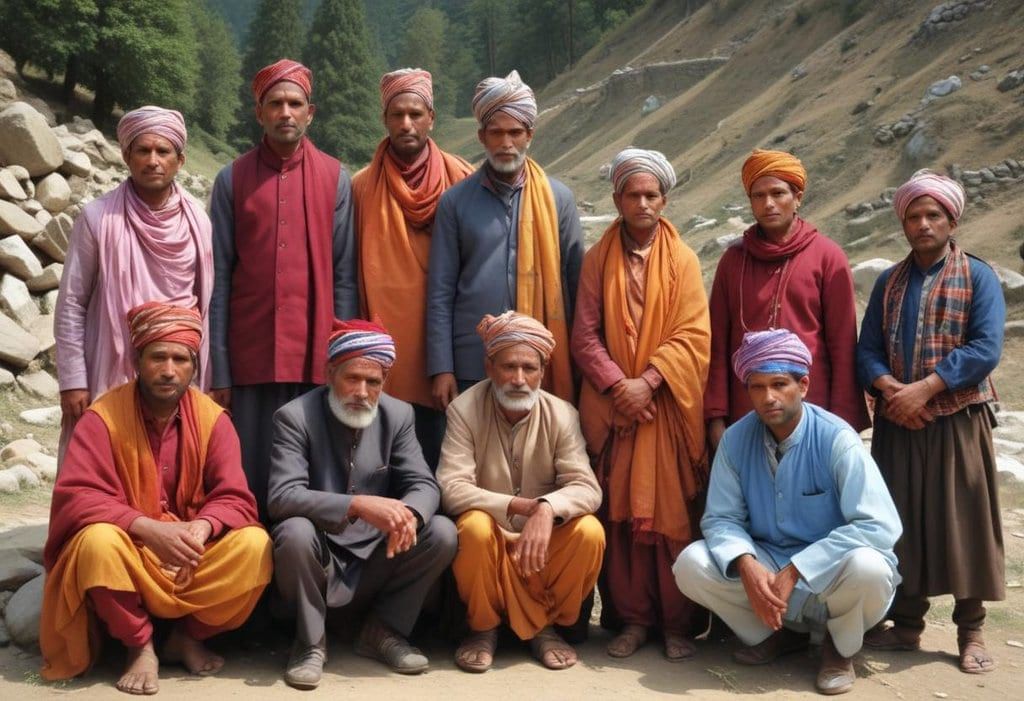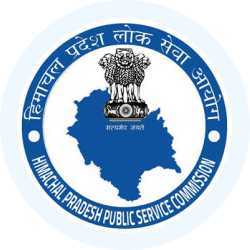Introduction
In the diverse socio-cultural landscape of Himachal Pradesh, various communities each have their own distinct roles, traditions, and social standings. These communities have evolved unique practices and statuses over time, contributing richly to the region's cultural mosaic. Here's an overview of some prominent communities, their traditional roles, and their societal positions.

- Kolis are believed to have descended from abandoned Kanets, a group that chose to take on the task of removing animal carcasses when many cattle died during an epidemic. Traditionally, this role was performed by the Chamar community, but with their absence, the Kanets stepped in.
- In the Shivalik Hills, the Kolis identify themselves as “New Rajputs” or Kshatriyas, claiming a higher status in society.
- Chamars are traditionally known as leather workers, spread widely across Himachal Pradesh.
- They worship their community deity, ‘Sidh Chano’, under the name ‘Garha Devta’.
- Chamars are also recognized by different names, including Mochi, Ramdasis, and Ravidasi, based on regional variations.
Question for Caste System in Himachal Pradesh
Try yourself:
Which community is traditionally known for their role in removing animal carcasses during epidemics?Explanation
- Kolis are believed to have descended from the Kanets who took on the task of removing animal carcasses during epidemics.
- This role was traditionally performed by the Chamar community, but the Kanets stepped in when they were absent.
Report a problem
- The Chanals have close occupational, ritual, and cultural similarities with the Halis of Chamba and the Kolis of Kullu and Shimla.
- In Kangra district, Chanals are considered socially lower than the Kolis.
- Most members of this community work as agricultural laborers for Brahmins and Rajputs in exchange for a portion of the harvest.
- The word "Hali" comes from the traditional plough (hal), and Halis earn their living through agriculture.
- Historically, Halis were tasked with handling animal skins, tanning hides, removing dead animals, and playing music during social and religious ceremonies, such as marriages.
- Hesis were traditionally nomadic minstrels, making a living by playing instruments like the Shehnai and Dholak or Tamborium.
- They were often found at weddings, where they would sing folk songs and deliver wedding greetings.
Question for Caste System in Himachal Pradesh
Try yourself:
Which community traditionally worked as nomadic minstrels, playing instruments like the Shehnai and Dholak at weddings?Explanation
- The Hesi community traditionally worked as nomadic minstrels, playing instruments like the Shehnai and Dholak at weddings.
Report a problem
- The Sippis are known as the "weavers" of the Gaddi tribe and are closely related to the Hali community in terms of occupation.
- They are primarily found in the Bharmour region of Chamba district.
- The Riharas are closely connected to the Dumna community in terms of occupation and livelihood.
- In Shimla district, they primarily engage in making Kirri (Kilta baskets) and removing cow dung. Some also work as silversmiths and tin smiths.
- While Turis are traditionally agriculturists, their primary occupation is music and dance, especially at social gatherings and ceremonies.
- In the Chopal area, they are referred to as "Dayal," while in other regions, they are known as "Dhakis" or "Bajgir."
- Their primary language is Sirmauri, and their main population is concentrated in the trans-Giri region of Sirmaur district.
Question for Caste System in Himachal Pradesh
Try yourself:
What is the primary occupation of the Turi community?Explanation
- The Turi community is primarily engaged in music and dance at social gatherings and ceremonies.
- They are known for their musical and dancing skills, which play a significant role in their community's cultural activities.
Report a problem
- The Acharaj, also known as Charaj, are Brahmins who specialize in conducting death rites (Kriya-Karam) for different Hindu communities.
- They earn their living by accepting offerings (dan) from people on behalf of the deceased.
- The Battarhas are stone workers or craftsmen involved in dressing and breaking stones.
- They are commonly referred to as Mistri, Rajgir, Raj, or Sangatrash, depending on the region.
- Sunars are the village jewelers who also serve as moneylenders. They take ornaments as collateral and offer cash loans based on their value.
- This community is also known by other names such as Soni, Kapila, Jargar, and Zargar, with subgroups like Tank and Mair.
Question for Caste System in Himachal Pradesh
Try yourself:
Which community is known for conducting death rites for different Hindu communities?Explanation
- Acharaj community specializes in conducting death rites for different Hindu communities, earning their living through offerings on behalf of the deceased.
Report a problem
- Thatheras are metalworkers, specializing in making vessels out of brass, copper, and mixed metals.
- This community is divided into various subgroups, known as gotras, including Mehta, Wadhvan, Uppal, Chadha, Varma, and Anand.
- Kumhars are potters who produce earthen pots, commonly used in villages to store grains and water.
- They belong to different gotras, such as Shandil, Kashab, and Bharapdariye.
- Dumnas are craftsmen who primarily work with bamboo. They create items such as sieves (tokri), winnowing pans, fans, baskets, and furniture from bamboo.
- This community is predominantly found in the Chamba, Kangra, and Shimla Hills.
Question for Caste System in Himachal Pradesh
Try yourself:
Which community specializes in creating items such as sieves, winnowing pans, fans, baskets, and furniture from bamboo?Explanation
- Dumna community primarily works with bamboo to create various items like sieves, winnowing pans, fans, baskets, and furniture.
Report a problem
- The Ghiraths, also known as Chowdharys, are one of the dominant Hindu communities, coming just after Brahmins and Rajputs.
- Primarily located in Hamirpur, Kangra, Una, and Bilaspur districts, their traditional occupations revolve around animal husbandry and farming, as their name is derived from "ghee" (clarified butter).
- Many Ghiraths claim descent from Rajputs or Kshatriyas, and the community is divided into subgroups like Kaundal, Bhardwaj, Bhattlu, Badial, Pathari, Chhabru, Reru, and Chhora.
- Lohars are traditional blacksmiths who repair and make iron agricultural tools in villages.
- In return for their services, they receive a portion of the village's agricultural produce.
- Lohars use the Devanagari script and speak the local Pahari dialect within their community.
- Brahmins form one of the largest and most significant social groups in India, with their gotras (lineages) tracing back to ancient Rishi ancestors.
- Brahmins consider themselves descendants of seven revered Rishis, namely Jamdagni, Gautama, Bhardwaj, Atri, Agastya, Kashyapa, and Vashista.
- Their common gotras include Saraswat, Gauda, Vatsya, Upamanyu, Atri, Shandilya, Garga, Prashar, Gautam, and others.
Question for Caste System in Himachal Pradesh
Try yourself:
Which community is primarily involved in animal husbandry and farming?Explanation
- Ghirath Community is primarily involved in animal husbandry and farming, as their traditional occupations revolve around these activities.
- Lohar Community are traditional blacksmiths who repair and make iron agricultural tools in villages.
- Brahmin Community is one of the largest social groups in India with lineage tracing back to ancient Rishi ancestors.
- Rajput Community is known for their warrior lineage and historical significance.
Report a problem
- Rajputs are a prominent warrior and ruling caste in Himachal Pradesh. According to tradition, they are said to have originally descended from Brahmins.
- Rajputs are further divided into six status groups, such as Raja, Rajput, Mian, and Thakur. The Thakur category includes first and second-grade Ranas and Rathis.
- The Mahajan community, which translates to "the great folk," is also known by the names Shah or Sahukar.
- They consist of various sub-castes, such as Khatri, Kayastha, and Baniya, and are primarily involved in trade and money lending.
- The Soods are traditionally traders and shopkeepers, similar to the Bania, Khatri, and Mahajan communities.
- Their various clans include Butel, Gupta, Chimre, Bante, Bagle, Mahdudiye, Parkhoee, Chab, Kodel, Wahi, Kalander Baddhu, Baggha, and Augarh.
























